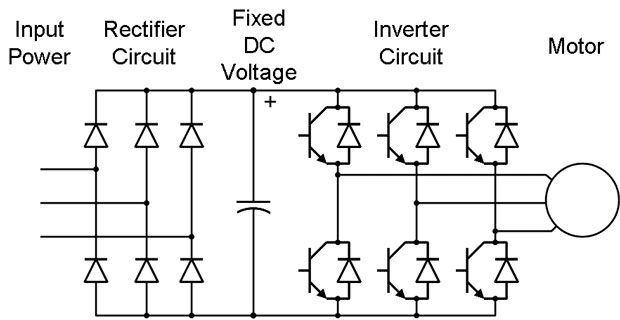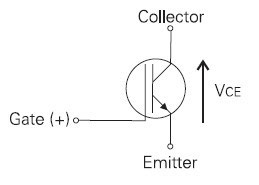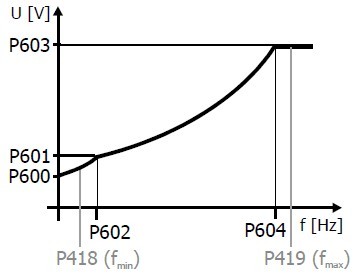Instrument Earth in variable frequency drive system
Instrument Earth can relate to the older practice of providing a separate or single point grounding scheme for all instrumentation. A DCS or central computer based control system of old were much more sensitive to noise, so the racks for the computers, I/O, power supplies, and UPS's would have electrically isolated earthing busses including isolating the panels from the floor with all the grounds collected using insulated cable back to one point where it connects to the power ground grid or to its separate earthing rood in the dirt. Modern systems are far less sensitive and today with fiber optics, the circulating ground loop noise is not as big a problem.
Normally in simple application both the power earth and electronic earth will be same. When comes to panel with drives, switching ckt or regeneration system the separation of power and electronic earth should be maintained. In-order that electronic should be so carefully isolated from power earth.
With the new VFDs, there is a lot of radio frequency noise generated in the variable frequency drives and between the drive and the motors. Ultimately that noise wants to get back to the VFD from where it originated. This has led to shielding on the motor cables and the like. I had a problem at one plant with a 300KW motor and VFD, where many instruments were going crazy when the associated fan was started. After investigating I found that the cable between the motor and VFD was unsheilded but installed in conduit. I had the technician install a small wire between the conduit and the VFD chasis earthing pad, mind you not the panel earthing pad, and they thought I was crazy. All they could see was that both the panel and conduit where firmly connected through the plant ground grid, so this move made no sense. After they made the connection all the problems with instrumentation disappeared because we had short circuited the noise straight away back to the variable frequency drive.
We can see it two ways in case of Signal.
For example:
1] Analog Signal wiring:- 2 core shielded wire will be used.
Red :- + ve signal or - ve signal
Black :- vice versa of red signal
Shield :- Ground. This is called instrument earth.
The necessity of the Shield is to avoid the influence of noises created by power conductors / drives / smps so on...
2] Digital Encoder Signal Wiring :- 8 core shielded wire will be used.
Signal A :- BLUE
Signal A NOT :- BLUE & BLACK
Signal B :- GREEN
Signal B NOT :- GREEN & BLACK
Signal C :- BROWN
Signal C NOT :- BROWN & BLACK
+VCC :- RED
0 :- BLACK
SHIELD :- Instrument Earth.
So the Instrument earth can't be said as reference signal. Most of the people are using Instrument Earth as reference signal where they want to nullify the reference signal to bring back to zero.
Normally in simple application both the power earth and electronic earth will be same. When comes to panel with drives, switching ckt or regeneration system the separation of power and electronic earth should be maintained. In-order that electronic should be so carefully isolated from power earth.
With the new VFDs, there is a lot of radio frequency noise generated in the variable frequency drives and between the drive and the motors. Ultimately that noise wants to get back to the VFD from where it originated. This has led to shielding on the motor cables and the like. I had a problem at one plant with a 300KW motor and VFD, where many instruments were going crazy when the associated fan was started. After investigating I found that the cable between the motor and VFD was unsheilded but installed in conduit. I had the technician install a small wire between the conduit and the VFD chasis earthing pad, mind you not the panel earthing pad, and they thought I was crazy. All they could see was that both the panel and conduit where firmly connected through the plant ground grid, so this move made no sense. After they made the connection all the problems with instrumentation disappeared because we had short circuited the noise straight away back to the variable frequency drive.
We can see it two ways in case of Signal.
For example:
1] Analog Signal wiring:- 2 core shielded wire will be used.
Red :- + ve signal or - ve signal
Black :- vice versa of red signal
Shield :- Ground. This is called instrument earth.
The necessity of the Shield is to avoid the influence of noises created by power conductors / drives / smps so on...
2] Digital Encoder Signal Wiring :- 8 core shielded wire will be used.
Signal A :- BLUE
Signal A NOT :- BLUE & BLACK
Signal B :- GREEN
Signal B NOT :- GREEN & BLACK
Signal C :- BROWN
Signal C NOT :- BROWN & BLACK
+VCC :- RED
0 :- BLACK
SHIELD :- Instrument Earth.
So the Instrument earth can't be said as reference signal. Most of the people are using Instrument Earth as reference signal where they want to nullify the reference signal to bring back to zero.
Post a Comment:
You may also like:
Featured Articles
What is VFD, How it works? - VFD ...
 VFD is shorted for Variable Frequency Drive (also known as AC Drives and Inverters) -- that's used to make an AC motor working in ...
VFD is shorted for Variable Frequency Drive (also known as AC Drives and Inverters) -- that's used to make an AC motor working in ...
 VFD is shorted for Variable Frequency Drive (also known as AC Drives and Inverters) -- that's used to make an AC motor working in ...
VFD is shorted for Variable Frequency Drive (also known as AC Drives and Inverters) -- that's used to make an AC motor working in ...VFD: Insulated Gate Bipolar Transistor ...
 IGBT (insulated gate bipolar transistor) provides a high switching speed necessary for PWM VFD operation. IGBTs are capable of ...
IGBT (insulated gate bipolar transistor) provides a high switching speed necessary for PWM VFD operation. IGBTs are capable of ...
 IGBT (insulated gate bipolar transistor) provides a high switching speed necessary for PWM VFD operation. IGBTs are capable of ...
IGBT (insulated gate bipolar transistor) provides a high switching speed necessary for PWM VFD operation. IGBTs are capable of ...Three phase inverters
 In the variable frequency drive rectifier paper, it explains how to go from three phase alternating current voltage to a direct ...
In the variable frequency drive rectifier paper, it explains how to go from three phase alternating current voltage to a direct ...
 In the variable frequency drive rectifier paper, it explains how to go from three phase alternating current voltage to a direct ...
In the variable frequency drive rectifier paper, it explains how to go from three phase alternating current voltage to a direct ...Variable Frequency Drive Harmonics and ...
A discussion of the benefits of variable frequency drives often leads to a question regarding electrical harmonic distortion ...
Variable frequency drive Energy saving
 Energy can be saved in a VFD by reducing the losses in the electric motor or by reducing the energy consumption of the variable ...
Energy can be saved in a VFD by reducing the losses in the electric motor or by reducing the energy consumption of the variable ...
 Energy can be saved in a VFD by reducing the losses in the electric motor or by reducing the energy consumption of the variable ...
Energy can be saved in a VFD by reducing the losses in the electric motor or by reducing the energy consumption of the variable ...
VFD manufacturers
